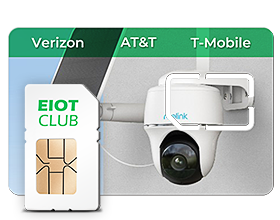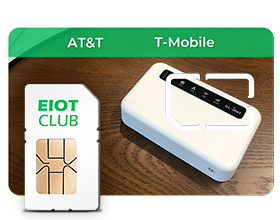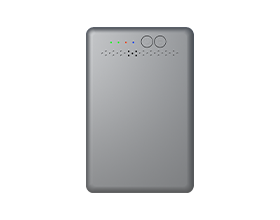Exploring the Role of SIM Cards in Cameras and Security Systems

Navigation
- Do you need a SIM card for a camera?
- What kind of SIM card do you need for a security camera?
- Can you put a SIM card in a security camera?
- What is the purpose of a SIM in a security camera?
- Can a security camera work with mobile data?
Introduction
SIM cards have become an integral enabling technology for connecting devices to cellular networks. Beyond phones and tablets, we now see SIM integration in cameras and security systems to enhance remote functionality. In this article, we'll explore SIM cards' role in these devices. We'll look at which camera types utilize SIMs, the ideal SIMs for security systems, inserting SIMs into cameras, the benefits unlocked, and how mobile data is transforming surveillance solutions.
Do you need a SIM card for a camera?
Not all cameras require a SIM card, depending on the type and capabilities. Basic consumer point-and-shoot cameras don't need SIM connectivity because they are designed for portability and don't offer advanced sharing or live viewing options. DSLR cameras also don't typically support SIMs because their focus is high-resolution photography rather than connectivity.
However, more advanced camera types can benefit greatly from SIM integration. For example, security cameras, trail cameras used for hunting or wildlife, and home nanny cams often have SIM card slots. This enables real-time remote viewing, motion alerts, and seamless video uploads to the cloud over mobile data networks.
Similarly, the latest action cameras like GoPros integrate SIM support to provide live streaming and instant sharing capabilities from anywhere. Generally, any camera intended for outdoor use, security purposes, or remote functionality is a candidate for SIM integration.
What kind of SIM card do you need for a security camera?
Most SIM-enabled home or commercial security cameras are compatible with standard nano SIM cards - the same used in smartphones. However, there are a few considerations for choosing the right SIM:
- A data-only SIM is ideal as you won't need actual phone service - just a data connection. This is more cost-effective than a voice/data plan.
- Select a prepaid SIM without any long-term contracts to better control costs. Many offer auto-top-up when balances run low or data add-ons as needed.
- Data requirements vary based on video resolution and streaming frequency. For reliable performance, choose at least a 5GB per month plan. Higher resolution or frequent streaming may require 10GB or more.
Specialist IoT or machine-to-machine SIMs are also available for optimization with automated camera systems. These offer enhanced remote manageability and usage monitoring.
Can you put a SIM card in a security camera?
Most current IP security cameras on the market support SIM cards, whether professional surveillance systems or consumer-grade DIY models. Even many budget-friendly kits for home security come equipped with integrated SIM card slots out of the box.
Inserting the SIM card is a straightforward process - most cameras utilize micro or nano SIM cards, which are about the size of a fingernail. You simply need to locate the SIM card tray, which is typically accessed by sliding off a small cover on the exterior of the camera body. The tray mechanism allows you to easily pop the SIM card in and out.
With the nano or micro SIM supplied by your cellular provider inserted, the security camera can now establish a connection to the mobile network for wireless data transmission. As long as you have coverage in the area, the camera can leverage mobile connectivity for remote access, live viewing, notifications, and cloud storage without needing WiFi or cables.
Many cameras also support external antenna ports should you need to attach higher gain antennas to boost cellular signals in weak coverage areas. With the SIM card activated on a cellular plan, the integration unlocks the full flexibility of your wireless security system by enabling true mobility and eliminating physical internet restrictions.
What is the purpose of a SIM in a security camera?
A SIM card is extremely valuable in modern IP-based security cameras, unlocking capabilities that truly maximize their wireless functionality. By providing a gateway to cellular data connectivity, the humble SIM card brings reliable mobility and robust features. Some major benefits make SIM functionality so valuable in security cameras:
- Enables wireless operation - cameras can be installed anywhere without WiFi or cables.
- Allows real-time remote access from your phone to view live feeds on the go.
- Motion alerts and video can be sent instantly over the cellular network.
- Seamless cloud uploads for backup and monitoring without a field recorder.
- Support for two-way audio communication through cameras over mobile data.
- Robust security network with redundancy between cellular and WiFi.
Ultimately, the SIM card functionality empowers fully wireless security solutions for maximum flexibility.
Can a security camera work with mobile data?
Absolutely, cellular connectivity through SIM cards is becoming a core capability for security cameras and systems. Integrating a SIM slot into the camera allows for wireless operation without needing WiFi networks or wired internet connections.
The mobile data connectivity enables seamless live remote viewing and control from your smartphone or PC, no matter where the cameras are installed. Mobile data capabilities power powerful features like instant motion-triggered alerts, automated cloud backups for footage, and two-way voice communications.
Many security camera providers now offer bundled solutions featuring mobile data-enabled cameras packaged with a compatible LTE SIM card included right out of the box. This makes tapping into the wireless functionality effortless without sourcing a SIM separately.
For DIY security setups, you can empower any SIM-compatible camera with cellular connectivity by installing an inexpensive mobile data SIM you can pick up from various third-party retailers. With the performance of 4G LTE networks, the cameras can leverage the wireless data capabilities for robust features previously not possible in wired-only setups.
Conclusion
SIM cards have become integral enablers of connectivity and mobility for modern cameras. With a nano-SIM, security systems gain wireless capabilities for live remote access, instant alerts, and cloud backups. SIMs deliver live streaming and sharing directly from the camera for action cams and outdoor photography. Choosing an appropriate data plan and taking advantage of purpose-built mobile camera packages simplifies tapping into the flexibility of SIM-powered cameras. Expect embedded SIM usage in cameras to accelerate as wireless networks expand, making location-agnostic operation standard. The innovation of SIM technology perfectly complements cameras to extract maximum connectivity from a compact device.









































